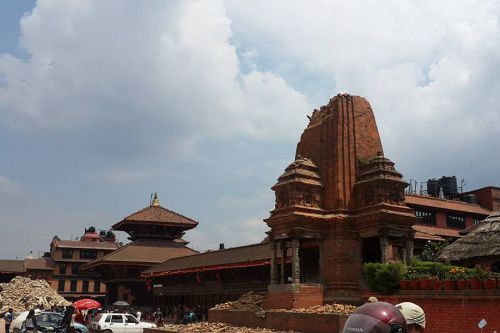Members of the international Catholic aid agency Caritas visited Nepal last week to mark the anniversary of a devastating earthquake that left millions homeless, bringing aid and a spirit of solidarity.
A delegation of Caritas International participated in a conference in the Nepali capital Kathmandu April 25 — 27, and visited outlying areas affected by the quake. They evaluated the relief effort of the Church thus far, and planned future projects for the agency.
“I am really amazed by the resilience of the earthquake affected people in Nepal,” Bishop Tarcisio Isao Kikuchi of Niigata told CNA May 2. Bishop Kikuchi participated in the delegation as head of Caritas Asia.
“People have not lost their hope for future,” he said, though “one year after the disaster, people are still living in shelters, unable to reconstruct their houses.”
“Though they have been facing terrible difficulties and a delay of official assistance, they are confident of rebuilding their life in due time.”
A 7.8 magnitude earthquake struck Kathmandu April 25, 2015, killing more than 8,000 persons, and was followed by some 120 aftershocks. A second major quake, magnitude 7.3, hit eastern Nepal May 12, 2015.
Bishop Kikuchi and the other delegates visited quake-hit areas outside Kathmandu, going to villages in the Himalayas often accessible only by dirt roads, and where the path to recovery will be a long one.
Among these was was Balthali, one of the worst-affected areas which is more than 25 miles southeast of Kathmandu, where nearly 190 houses were destroyed.
Nepalis there are continuing their lives despite continuing to live in makeshift shelters made of tarps or sheets of tin. Very few of the estimated 800,000 buildings destroyed by the earthquakes have been rebuilt, and the Red Cross believes some 4 million persons continue to live in substandard, temporary shelters.
The Nepali government has given some payments to earthquake victims for hardship, but most of its pledged funds of $2,000 for each family to rebuild a home have not been paid. The slow government response in releasing grants, the delay of official assistance, and bureaucratic hurdles are frustrating locals as well as international aid workers.
Caritas and Catholic Relief Service quickly released initially basic relief materials after the quakes, to reach out to more than 15,000 households with emergency food, blankets, tents, clean water, medicine, personal hygiene kits, and other basic items.
CRS and Caritas Nepal have also begun rebuilding efforts in four of the country's 75 districts.
According to CRS, 25 percent of the population of Nepal live in extreme poverty, and 83 percent of Nepal’s people live in rural areas, and for them “the impact of the quake on lives, livelihoods, and dignity was immense.”
Bishop Kikuchi, whose own country was recently struck by earthquakes, commented that “based on our experience of disaster in Japan and also my own encounters with so many victims of natural disaster in different countries, I know it takes quite long time for victims to recover normal life as before the disaster, both in rich, developed countries and in poor, underdeveloped countries.”
“Materially speaking, people in rich countries such as Japan have an advantage in receiving relief goods without much delay, and in abundance,” Bishop Kikuchi continued.
“However, that does not mean victims in rich countries have an advantage in psychological compensation, because in many cases in rich countries, human relationship in local communities have been lost in individualism.”
Ananda Pokharel, the Nepali minister for culture and tourism, told participants at the Caritas Symposium that the government appreciates the Catholic Church's aid in relief efforts.
Though only 7,000 of Nepal's 29.8 million people are Catholics, the national and local governments appreciate the Church's social action and pastoral services.
Bishop Kikuchi explained that the Church is adept at providing disaster assistance because it is “there with the people even before disaster happens, as well as during the disaster and after the disaster.”
During the conference the bishops and Caritas members also prayed in solidarity with the victims who lost their lives, and encouraged the Nepali people to look to the future with optimism and hope.

